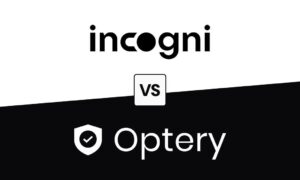In today’s digital-first world, the demand for fast, responsive, and reliable web applications has never been higher. Whether you’re building a simple website or a complex enterprise-level platform, ensuring scalability is critical to long-term success. One individual who has become synonymous with cutting-edge web architecture and scalable solutions is Raman Bhaumik.
Raman Bhaumik, an expert in modern web development, has made significant contributions to the design and architecture of scalable systems that are both resilient and efficient. In this guide, we explore some of the key principles and strategies recommended by Raman for creating modern web architectures that can scale seamlessly with the growing demands of users.
Emphasizing Microservices for Flexibility and Scalability
One of the most transformative shifts in web architecture over the last decade has been the adoption of microservices. Rather than relying on a monolithic approach, where everything is tightly coupled within a single codebase, microservices break down an application into smaller, independently deployable services. Each service is responsible for a specific business function.
Raman advocates for this shift because it allows teams to scale components of the application based on usage, rather than scaling the entire monolith. For instance, if a particular feature experiences a spike in traffic, it can be scaled independently, without the need to scale the entire application, thus optimizing resource usage and minimizing cost.
“Microservices provide unmatched flexibility, allowing teams to build independently scalable components while reducing the risk of bottlenecks that could slow down the entire application.” — Raman Bhaumik
Cloud-Native Architectures: Leveraging Cloud Infrastructure for Efficiency
Raman stresses the importance of embracing cloud-native architectures for building modern web applications. Cloud providers such as AWS, Azure, and Google Cloud offer a wide range of tools and services that can help developers create highly scalable and reliable applications.
By taking advantage of cloud-native services, such as containerization (with Docker and Kubernetes), serverless computing, and distributed databases, developers can build systems that automatically scale in response to demand. Cloud providers also offer built-in monitoring and analytics, which provide real-time insights into the health of your application, ensuring quick responses to potential issues.
“The cloud provides an environment where scalability is no longer a concern; it’s built into the infrastructure. This allows developers to focus on innovation, rather than worrying about capacity limits.” — Raman Bhaumik
API-First Design for Seamless Integration
In the world of modern web development, APIs have become the backbone of communication between different systems. Raman’s approach to modern web architecture places a strong emphasis on API-first design. This principle ensures that your application is designed from the ground up to expose clear, well-documented APIs that other systems and platforms can easily integrate with.
By prioritizing APIs in the development process, you’re not just building a web app for the web browser; you’re creating a platform that can communicate seamlessly with mobile apps, IoT devices, and other external services. This kind of flexibility is key to ensuring that your application can scale to meet the needs of different devices and user bases.
“Designing with APIs first means you are building a product with scalability in mind. Every external integration becomes seamless, allowing growth without friction.” — Raman Bhaumik
Focus on Automation and Continuous Deployment
One of the cornerstones of Raman Bhaumik’s scalable success strategy is automation. In today’s fast-paced development environment, manual deployment and testing processes are not sustainable. Raman encourages the use of continuous integration (CI) and continuous deployment (CD) pipelines, which automate the process of testing, building, and deploying code.
With automation in place, teams can deploy changes more frequently, leading to faster iterations and reduced downtime. Moreover, automated testing ensures that updates don’t break existing functionality, which is especially important as the complexity of your application increases.
“Automation is no longer a luxury; it’s a necessity for scaling modern applications. Continuous deployment enables teams to react quickly and with confidence to changing needs.” — Raman Bhaumik
High-Availability and Fault-Tolerance
Scalability is not just about being able to handle more users; it’s also about ensuring that your system remains available and functional under various conditions. Raman advocates for building fault-tolerant systems that can gracefully handle failures without affecting user experience.
This approach includes leveraging redundant systems, load balancing, and failover mechanisms to ensure high availability. By distributing traffic across multiple servers and data centers, you can ensure that a single failure does not bring your entire application down.
“When building for scale, high availability isn’t optional—it’s a core principle. Your application needs to survive failures without compromising on user experience.” — Raman Bhaumik
Data Management: Consistency and Performance
Another key principle in modern web architecture is the ability to manage data effectively. As applications scale, so do the data storage and retrieval needs. Raman recommends using distributed databases and data storage solutions that can scale horizontally to handle increasing amounts of data without compromising performance.
Additionally, she stresses the importance of balancing consistency and availability in your data architecture. For example, while it’s crucial to ensure that data remains consistent across all nodes, certain use cases may require prioritizing availability over consistency (as outlined in the CAP theorem). Choosing the right data model based on your application’s needs can help maintain performance while ensuring that your system remains scalable.
“Data management at scale requires a balance between ensuring data consistency and ensuring availability. The right approach depends on the unique needs of your application and its users.” — Raman Bhaumik
Optimizing for Performance: Caching and Edge Computing
To handle high traffic and ensure fast load times, Raman emphasizes the use of caching strategies and edge computing. Caching frequently accessed data reduces the load on your databases and speeds up response times. Similarly, edge computing, which involves processing data closer to the user’s location, ensures that your application remains fast, regardless of the geographic location of the user.
By incorporating CDNs (Content Delivery Networks) and edge servers into your architecture, you can distribute static content and offload traffic from your origin servers, reducing latency and improving the overall performance of your web application.
“Caching and edge computing aren’t just performance enhancements—they’re essential for keeping your app fast as it grows. The closer you are to the user, the better the experience.” — Raman Bhaumik
Monitoring and Observability for Proactive Management
Lastly, Raman advocates for comprehensive monitoring and observability strategies to ensure systems remain healthy and scalable. Tools like Prometheus, Grafana, and New Relic allow teams to track the performance of individual services, measure system health, and identify potential bottlenecks before they become critical issues.
By adopting an observability-first mindset, teams can proactively manage performance, troubleshoot issues, and ensure that their web architecture is always operating at peak efficiency.



































